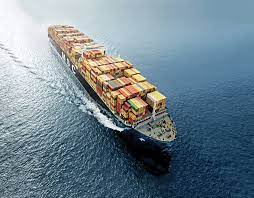The Controlled Chaos of Dropping Anchor: When a Safeguard Can Turn Risky
The anchor, a heavy metal symbol of security, evokes images of tranquil harbors and ships resting peacefully. However, beneath this serene facade lies a complex and potentially dangerous operation: dropping anchor. While crucial for stopping a ship and preventing it from drifting, the process can be fraught with hazards if not executed with meticulous planning and caution.

This article delves into the world of ship anchoring, exploring the factors that make dropping anchor risky and the safety protocols in place to mitigate these dangers.
The Delicate Dance of Stopping a Massive Machine
Unlike applying brakes to a car, stopping a ship requires a more nuanced approach. Anchors, particularly for large vessels, can weigh tens of tons, and the anchor chain, a colossal length of steel links, can stretch for hundreds of meters. The sheer force involved in deploying this equipment at sea is immense.
The primary risk associated with dropping anchor stems from the sudden strain placed on the anchor, chain, and the ship itself. When a moving ship lets go of its anchor, the chain rapidly pays out, experiencing tremendous tension. This can lead to several potential dangers:
- Chain Snapping: Under extreme pressure, the anchor chain can snap, rendering the anchoring attempt useless and potentially whipping back towards the ship, endangering crew and equipment.
- Anchor Breakage: Though less common, a faulty or overloaded anchor could break under the strain, again leaving the ship adrift.
- Winch Malfunction: The winches used to deploy and retrieve the anchor are powerful machinery. If they malfunction during deployment, they can cause the chain to run out of control, creating a tangled mess or even snapping.
The Fury of the Sea: External Threats
The unforgiving nature of the sea adds another layer of complexity to anchoring. Here’s how external factors can complicate the process:
- Water Depth and Bottom Composition: Anchoring success relies on the anchor flukes (the flat parts that dig into the seabed) properly gripping the bottom. In shallow water, there’s a risk of the anchor not finding sufficient purchase, causing the ship to drag. Conversely, rocky bottoms pose a danger of damaging the anchor or chain.
- Currents and Wind: Strong currents and winds can significantly affect a ship’s position after dropping anchor. Miscalculations can lead to the ship drifting towards hazards or colliding with other vessels.
- Underwater Obstacles: Uncharted underwater obstacles like shipwrecks or pipelines can snag the anchor chain, hindering retrieval and potentially causing damage.
Safety First: Protocols for a Controlled Drop
Given the inherent risks, anchoring procedures prioritize safety above all else. Here are some key steps involved in a safe anchoring operation:
- Pre-anchoring Checks: A thorough inspection of the anchoring equipment, including the anchor, chain, and winches, is mandatory before deployment.
- Depth Sounding: Using sonar technology, the crew meticulously maps the seabed to determine the ideal anchoring location based on depth and bottom composition.
- Calculating Anchor Rode: The length of anchor chain deployed (known as the rode) is crucial. It needs to be long enough to ensure a secure hold but not excessively long to avoid tangling with other vessels or underwater obstacles.
- Controlled Descent: The anchor is not simply dropped; it is carefully lowered with the winch to prevent excessive strain and snapping.
- Anchor Watch: Once anchored, a dedicated crew member, known as the anchor watch, continuously monitors the ship’s position and ensures the anchor remains secure.
Technology’s Role in Safer Anchoring
Advancements in technology are constantly improving the safety and efficiency of anchoring. Some notable examples include:
- Electronic Chart Systems (ECS): These digital navigation systems provide detailed seabed maps and real-time data on currents and wind, aiding in informed anchoring decisions.
- Anchor Monitoring Systems: These systems continuously monitor the tension on the anchor chain and alert the crew of any sudden changes that could indicate a problem.
- Advanced Anchor Designs: New anchor designs are constantly being developed to improve holding power in various seabed conditions, further enhancing anchoring security.
The Final Word: Anchoring – A Necessary Evil
While dropping anchor can be a risky maneuver, it remains an essential skill for any seafaring vessel. By prioritizing meticulous planning, adhering to safety protocols, and embracing new technologies, crews can significantly mitigate the risks associated with anchoring. It’s a testament to human ingenuity that we’ve transformed such a potentially dangerous act into a controllable safeguard, ensuring the safety of ships and their crews on the vast and ever-changing ocean.
Author: shipping inbox
shipping and maritime related web portal








